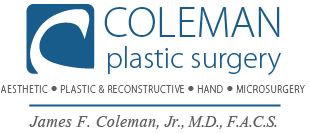Body Procedures
Tummy Tuck
What is tummy tuck surgery?
Tummy tuck surgery (Abdominoplasty) creates an abdominal profile that is smoother and firmer by removing excess fat and skin. In most cases, it also restores weakened or separated muscles .
A flat, well-toned abdomen is something many of us strive for through exercise and weight control. Sometimes these methods cannot achieve our goals. Even individuals of otherwise normal body weight and proportion can develop an abdomen that protrudes or is loose and sagging. The most common causes of this include:
- Pregnancy
- Aging
- Significant fluctuations in weight
- Heredity
- Prior surgery
Is a tummy tuck right for you?
Tummy tuck surgery is a highly individualized procedure and you should do it for yourself, not to fulfill someone else's desires or to try to fit any sort of ideal image.
Abdominoplasty is a good option for you if:
- You are physically healthy and at a stable weight
- You have realistic expectations
- You do not smoke
Where is it performed?
Tummy tuck surgery can be performed at a nearby fully accredited surgery center with an overnight stay for observation.
What to expect
A transverse scar is placed in an inconspicuous area, most often beneath the bikini or bathing suit line. Two small plastic drains are left in place for approximately 1 to 2 weeks, and are then removed easily in Dr. Coleman's office during a post-op visit.
Anesthesia and Medication
A tummy tuck most commonly requires general anesthesia, especially if the procedure is combined with liposuction.
Recovery
Most patients recover well enough to return to work and most normal activities in about 2 weeks.
Liposuction (body sculpting)
What is liposuction?
Also known as lipoplasty, liposuction slims and reshapes specific areas of the body by removing excess fat deposits, improving your body contours and proportion, and ultimately, enhancing your self-image.
Despite good health and a reasonable level of fitness, some people may still have a body with disproportionate contours due to localized fat deposits. These areas may be due to family traits rather than a lack of weight control or fitness.
Liposuction surgery can be used to treat stubborn fat pockets in many parts of the body including the thighs, arms, neck, hips, waist, back, inner knee, chest, cheeks, chin, calves, and ankles. In some cases, liposuction is performed alone, in other cases it is used with plastic surgery procedures such as a facelift, breast reduction, or a tummy tuck.
What liposuction won't do
Liposuction surgery is not a treatment for obesity and is not a replacement for regular exercise and good eating habits. People with stubborn areas of fat and who exercise regularly are the best candidates for this procedure.
How it works
Traditional liposuction, one of the most popular forms of cosmetic surgery in the U.S., typically begins with the administration of some form of anesthesia, either local anesthesia, intravenous sedation, or general anesthesia, accompanied with the infusion of a saline solution into the area of the body where liposuction will be performed. The solution contains medication to minimize pain and bleeding. Then, a small hollow tube attached to a vacuum is inserted through a small incision into the fat layer beneath the skin. It's moved around to break up the fat, which is then sucked out of the body.
Where is liposuction performed?
Liposuction is performed on an out-patient basis, at a nearby fully accredited surgery center.
Anesthesia and Medication
This procedure is typically performed under local anesthesia with sedation or general anesthesia.
What to expect
Once your procedure is completed, a compression garment or elastic bandages may cover treatment areas. These help to control swelling after liposuction and compress the skin to your new body contours. In addition, small temporary drains may be placed in existing incisions beneath the skin to remove any excess blood or fluid.
You will be given specific instructions that may include how to care for the surgical site(s), medications to apply or take orally to aid healing and reduce the potential for infection, specific concerns to look for at the surgical site or in your general health, and when to follow up with your plastic surgeon.
A special note: Secondary procedures may sometimes be recommended to reduce excess skin. Special considerations are needed when large amounts, usually more than 5 liters of fat, are suctioned.
Be sure to ask your plastic surgeon specific questions about what you can expect during your individual recovery period.
- Where will I be taken after my surgery is complete?
- What medication will I be given or prescribed after surgery?
- Will I have dressings/bandages after surgery? When will they be removed?
- Are stitches removed? When?
- When can I resume normal activity and exercise?
- When do I return for follow-up care?
Recovery
Depending on the liposuction procedure performed, most patients recover well enough to return to the work and most normal activities, including moderate exercise, in about 5 to 7 days.
VASER® Lipo
What is laser- and ultrasound-assisted liposuction?
Laser- and ultrasound-assisted liposuction, like traditional liposuction, aren't a weight control method or a fix for obesity. They are used to help contour your body in those areas that are not responsive to diet and exercise such as saddlebags or a paunchy stomach. Also like traditional liposuction, laser-assisted liposuction is most often used to reduce fullness in your:
- Abdomen
- Ankles
- Arms
- Buttocks
- Cheeks
- Chin
- Hips
- Knees
- Neck
- Thighs
- Upper arms
- Waist
How LASER Lipo works
Laser assisted liposuction takes advantage of the power and technology associated with medical laser beams to liquefy the fat cells, which are then sucked out of the area.
Ultrasound-assisted liposuction uses a special cannula (plastic tube) that vibrates very rapidly and gives off ultrasound energy. As the cannula passes through the fat cells, that energy liquefies the fat cells, which are then suctioned out. The ultrasound can be administered either above the skin (with a special emitter) or below the surface of the skin (with an ultrasound cannula).
Medical devices are used for a variety of medical procedures, but only certain devices are FDA approved or cleared for liposuction. Before considering laser or ultrasound assisted liposuction, it is important to determine that the device being used is cleared by the FDA.
Where is laser-assisted liposuction performed?
Laser-assisted liposuction is performed on an out-patient basis, at a nearby fully accredited surgery center.
Recovery
Most patients recover well enough to return to the work and most normal activities, including vigorous exercise, in about 5 to 7 days.
Post-Bariatric Body Contouring
What is post-bariatric body contouring?
Body contouring after major weight loss improves the shape and tone of your underlying tissue that supports fat and skin and removes excess sagging fat and skin.
What to expect
The success and safety of your body contouring procedure depends very much on your complete candidness during your consultation. You will be asked a number of questions about your health, desires and lifestyle. Be prepared to discuss:
- Why you want the surgery, your expectations and desired outcome
- The options available in body contouring surgery
- Medical conditions, drug allergies and medical treatments
- Use of current medications, vitamins, herbal supplements, alcohol, tobacco and drugs
- Previous surgeries
Where is it performed?
Post-bariatric surgery can be performed at a nearby fully accredited surgery center, with an overnight stay for observation.
What to expect
After your body contouring procedure is completed, dressings or bandages will be applied to the incisions. A small, thin tube may be temporarily placed under the skin to drain any excess blood or fluid that may collect.
You will be given specific instructions that may include how to care for your surgical site(s) following surgery, medications to apply or take orally to aid healing and reduce the risk of infection, specific concerns to look for at the surgical site or in your general health, and when to follow-up with Dr. Coleman.
Anesthesia and Medication
Post-bariatric surgery most commonly requires general anesthesia, especially if the procedure is combined with other procedures like liposuction.
Recovery
Most patients recover well enough to return to the work and most normal activities, including vigorous exercise, in about 2 to 3 weeks.
Buttocks & Thigh Augmentation (With liposuction or Fat Injection)
What is buttock/thigh liposuction?
Buttock lipo sculpture is a surgical shaping of fat tissue in the gluteal or buttock region. Using a combination of liposuctioning and small skin excisions, a more youthful buttock appearance can be achieved.
Thigh liposculpture is the removal of fat tissue beneath the skin of the outer and inner thighs. Liposculpture of the thighs can reshape your leg and help you to fit into clothing more easily.
What is buttocks augmentation?
Buttocks augmentation surgery (also butt lift and Brazilian butt lift) is a combination of liposuction and fat transfer to the areas of the buttocks that require contouring to achieve the desired correction. Because the adipose fat tissue injected to the patient is her own (autologous), the risk of infection is low
Dr. Coleman also offers the so-called Brazilian, which also is a fat-transfer procedure that combines liposuction around the buttocks and re-injection of fat to the buttocks. The fat is harvested from wherever the patient has an excess of adipose tissue, which is cleaned and then re-injected to achieve the desired degree of correction.
Where are these procedures performed?
Buttocks augmentation is typically performed at a nearby fully accredited surgery center, with an overnight stay for observation.
Anesthesia and Medication
Buttocks and thigh augmentation are typically performed under general anesthesia.
Recovery
Most patients recover well enough to return to the work and most normal activities, including moderate exercise, in about 2 to 3 weeks.
Arm lift
What is arm lift surgery?
An arm lift procedure (Brachioplasty) reduces excess skin and fat between the underarm and the elbow, reshapes your arm to result in smoother skin and contours, and results in a more toned and proportionate appearance.
What happens during arm lift surgery?
Medications are administered for your comfort during the surgical procedures. The choices include intravenous sedation and general anesthesia.
Incisions are generally placed on the inside of the arm or on the back of the arm, depending on the surgeon’s preference, and may extend from the underarm (axilla) to just above the elbow. If fat is to be reduced during your arm lift, it will be excised or treated with liposuction. Incision length and pattern depend on the amount and location of excess skin to be removed, as well as the best judgment of your plastic surgeon.
Depending on your specific conditions, incisions may be more limited. Then, underlying supportive tissue is tightened and reshaped with internal sutures. Finally, the skin is smoothed over the new contour of your arm.
Your incisions will be closed with absorbable sutures, or stitches that will be removed within 1-2 weeks following your arm lift. The smoother, tighter contours that result from brachioplasty are apparent almost immediately following your procedure, although initial results will be somewhat obscured by swelling and bruising. Your new, shapely and toned upper arm is dramatically improved both in appearance and feel.
What to expect
The results of arm lift surgery will be long-lasting, provided that you maintain a stable weight and general fitness. As your body ages, it is natural to lose some firmness, but most of your improvement should be relatively permanent
Where are these procedures performed?
Arm lift surgery is typically performed as an outpatient at a nearby fully accredited surgery center.
Anesthesia and Medication
The procedure typically performed under local anesthesia with sedation or general anesthesia.
Recovery
Most patients recover well enough to return to the work and most normal activities, including vigorous exercise, in about one to 2 to 3 weeks, depending on the specific procedure performed.








